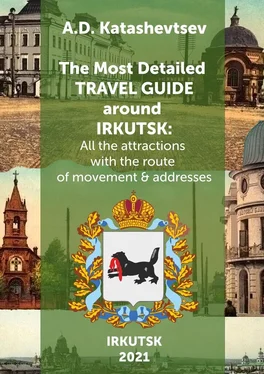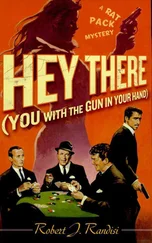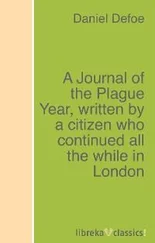
Znamensky Baths of the Polish revolutionary B.P. Shostakovich
Following the building of school No. 10 and its modern annex, there is another magnificent monument in a very neglected condition – this is the main building of the Irkutsk Teachers’ Seminary, which appeared at this place in 1872. Once upon a time life was in full swing here: one of the first meetings of Russian Communist Party of Bolsheviks in Irkutsk was held in the building, here also located the Marat Workers’ Palace, where a musical and theatre sections was operated. In 1925, the seminary complex was transferred to School No. 20 of Irkutsk, where it was housed until 1932, when the largest cartographic factory in Eastern Siberia moved in the premises. In 2005, the old building burned down and today is waiting for its fate.

Irkutsk Teachers’ Seminary
After the former seminary from the stone building of the Borukhson soap factory (Rabochego Shtaba street, 25), we turn left and go up an inconspicuous street named after the third Soviet cosmonaut and twice Hero of the Soviet Union A.G. Nikolaev. An old section of wooden buildings from the beginning of the 20th century has been preserved here.
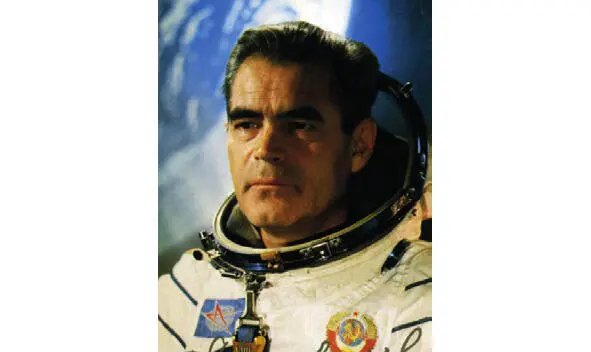
Soviet cosmonaut and twice Hero of the Soviet Union A.G. Nikolaev
The street ends at one of the iconic places of Irkutsk – this is a military hospital complex, which appeared here in 1878 according to the project of M.N. Ogon-Doganovsky. During the construction of this structure in September 1871, two Polish exiles Y.D. Chersky and A.L. Chekanovsky opened the first Paleolithic site in Russia (the discovery was more than 30 thousand years old) with various items made of reindeer and mammoth bones, as well as many ceramics things. The history of Siberian archaeology began at this place.
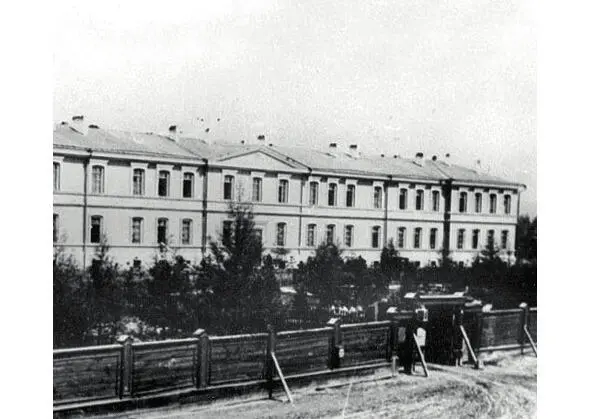
Military hospital complex
Now we turn right and go down Kirenskaya Street to Wheat Valley. Along the street there are many old wooden houses, mostly from the beginning of the 20th century.
At the next crossroads let’s turn right again and find ourselves on a street named after Irkutsk writer P.P. Petrov. Further we will go left and down along Trubetskoy Street, which received its name in honour of the head of the Decembrist uprising, who lived here from 1845 to 1854 at the former country house of Irkutsk civil governor I.B. Zeidler. The son of S.P. Trubetskoy lived here upon leaving for Moscow in 1868, however, he sold it, and later it burned down in 1908. There is a small playground on the site of this estate today.

House of S.P. Trubetskoy
Nearby is the building of an industrial school built here in 1907 according to the plan of the famous Russian architect R.R. Marfeld. In 1908, the project of this building was awarded as one of the most interesting creations from Russian and foreign practice. Today it houses a technical school of mechanical engineering, which still bears the name of N.P. Trapeznikov, according to whose plan was opened in 1868 the first such institution in Irkutsk. Many famous athletes, such as the two-time Olympic champion in classical wrestling K.V. Vyrupaev and the silver medallist of the Olympic Games in athletics E.V. Bagryantseva and also Hero of the Soviet Union V. I. Davydov.
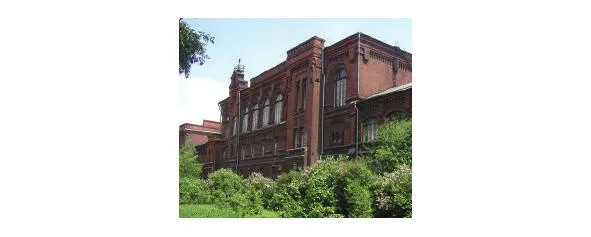
Technical school of mechanical engineering of N.P. Trapeznikov
On this we will say goodbye to the suburb of Marat and go to one of the poorest districts of Irkutsk – Rabocheye (Crafts district). This part of the city was formed in 1794, when all large and small factories of the city were moved beyond the right bank of Ushakovka River for the purpose of sanitary and fire safety, forming a Crafts Sloboda.
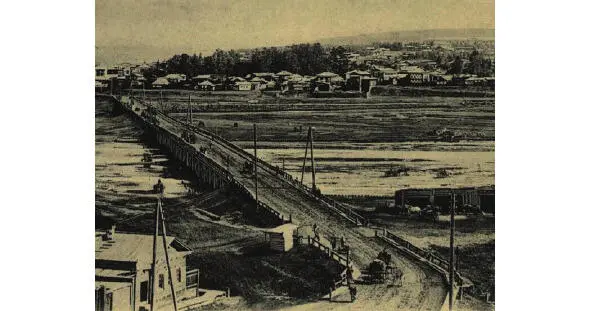
Crafts Sloboda
At the entrance to the district we are met with Barrikad Street, named after the defensive structures that were constructed by the revolutionary forces of workers and peasants squads during an attempt to storm the city on December 28, 1919. Right at the exit from the Marat Ring the road runs into a squat grey house (Barrikad Street, 27), where was located the hospital of the Bolshevik Red Cross in the Znamenskiy hospital during the battles in 1919. Next to it is an unremarkable house of doctor F.N. Petrov, who worked at this hospital. He took an active part in the revolutionary events in Irkutsk as a Bolshevik. Later, he will become the deputy editor of the Great Soviet Encyclopedia – one of the largest Russian-language handbooks.

House of doctor F.N. Petrov
Soon on the left we will meet the first stone construction on this street – this is a part of the complex of the house of the millionaire merchant and benefactor N.L. Rodionov, who was a native of local workers and co-owner of the well-known company “Rodionov, Khaminov and Kº”, which owned tea plantations in China, as well as various capital and real estate in Irkutsk.

Merchant and benefactor N.L. Rodionov
Immediately behind it are brick workshops of the first steam brewery in Irkutsk, built here in 1890. It belonged to the Perm bourgeoisie F.F. Dorenberg. The products of this company were highly valued, and its beer of the brand “Porter” was even served on cruise ships sailing from the Baltics to America. There were five breweries in Irkutsk, the oldest of which appeared also in this part of the city at the end of the 17th century.
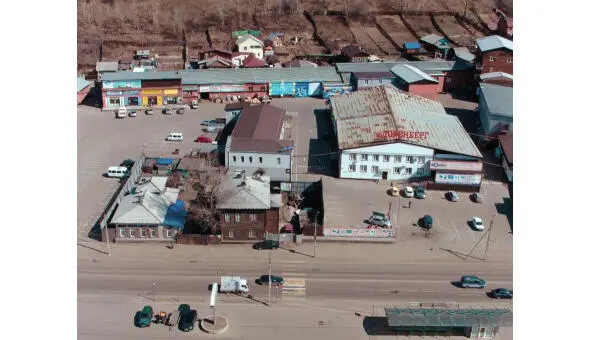
Steam brewery of F.F. Dorenberg
Next along the street, among the faceless Soviet buildings attention is drawn to a four-story brick mansion built in 1911, in which the Central Workers’ Headquarters of Workers’ and Peasants’ squads was located for several days in December 1919.
Конец ознакомительного фрагмента.
Текст предоставлен ООО «ЛитРес».
Прочитайте эту книгу целиком, на ЛитРес.
Читать дальше
